|
|
Post by engineerone on Feb 11, 2008 22:05:01 GMT
so how do you guys get them the same every time??? you make the doors, and then drill the cup for the hinge plate on the door, how do you ensure they are all in the same relative place, do you make or use a jig??? as for the hinge plates on the carcase same again what do you do to ensure they are all in the same place. this is not for those who produce 1000s of doors, but rather to get a general idea of the methods used if say you do some every couple of weeks or so. ;D paul  |
|
|
|
Post by gazza on Feb 11, 2008 22:17:52 GMT
|
|
|
|
Post by paulchapman on Feb 11, 2008 22:20:58 GMT
For the hole in the door, I use a Record drill stand to which I have fitted a large wooden base. I just cramp a straightedge to that to get the correct inset from the edge of the door. If you are fitting those Blum Inserta-type hinges that fit without screws, Woodfit do the jig for drilling the additional two small holes www.woodfit.com/product_info.php?cPath=114_335&products_id=2&Name=Inserta+Hinge+Drilling+JigFor the carcase, I just mark it out with a pencil and drill the screw holes with a hand drill. All the dimensions are on the Woodfit and Blum sites. I don't do that many so try to keep it simple. So far it's worked every time. Cheers  Paul |
|
|
|
Post by mailee on Feb 11, 2008 23:23:49 GMT
I use a forstner bit in my drill press and a template I made. My template has a centre line and after measuring the distance from top or bottom of door I drill to this. I also have a template for the cabinet side hinge too, both made out of MDF. HTH.  |
|
|
|
Post by jasonb on Feb 12, 2008 17:22:58 GMT
Simple template like this works for me with a TCT hinge bit in the cordless, also have a similar one for plunging with the router using a 40mm guide bush. Screws on the stop are used to adjust the edge distance   And for the plates I use this with a sprung centering bit, two sets of holes for layon and inset doors  Jason |
|
|
|
Post by jfc on Feb 13, 2008 18:03:15 GMT
About 22mm in and with a drill , freehand .
|
|
|
|
Post by dom on Feb 13, 2008 19:11:09 GMT
Jig and a drill press.
|
|
|
|
Post by engineerone on Feb 13, 2008 19:15:00 GMT
what jig dom?  ? paul  |
|
|
|
Post by dom on Feb 13, 2008 19:51:27 GMT
what jig dom?  ? paul  Ah sorry. Don't have a picture, but. A squared board( large enough to support the door) clamped to the drill press with the back of the board hard against the pillar, then insert your drill bit and lower to the board to make a pin prick hole, from that hole mark a point 23mm towards the pillar. Now clamp, or better still screw, a length of hardwood parralel to the back along that point. That's it If you want all of your holes in the same place put marks on the board. I made one with the harwood strip let into the board. |
|
|
|
Post by dom on Feb 14, 2008 17:57:25 GMT
Just for you Paul 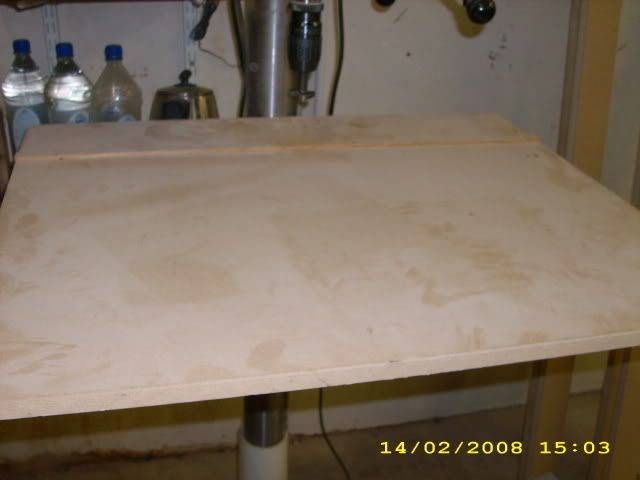 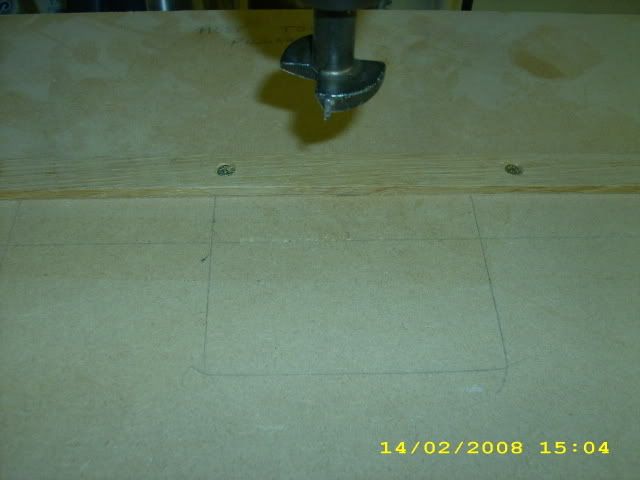 |
|
|
|
Post by 9fingers on Feb 16, 2008 20:15:00 GMT
I've just been fitting 12 kitchen cupboard type doors to the wall cupboards in my workshop. Here is the jig I made to get the hinges in just the right position. The jig is made of resin coated ply (just because I have loads of it). A parallel strip of ply is fixed down the center of the base at right angles to the end stop. A small gap between the two stops prevents shavings and dustgetting in the way of accurate location. 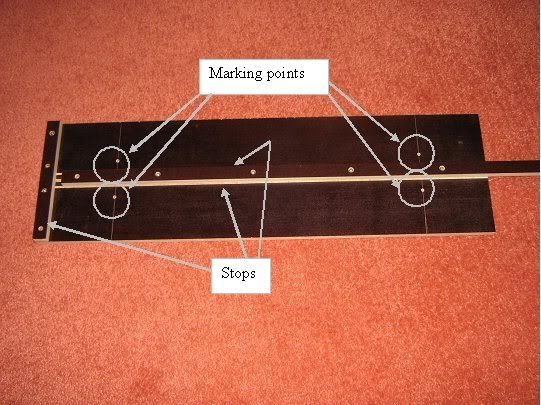 The marking points are made from screws driven in from the underside of the jig. 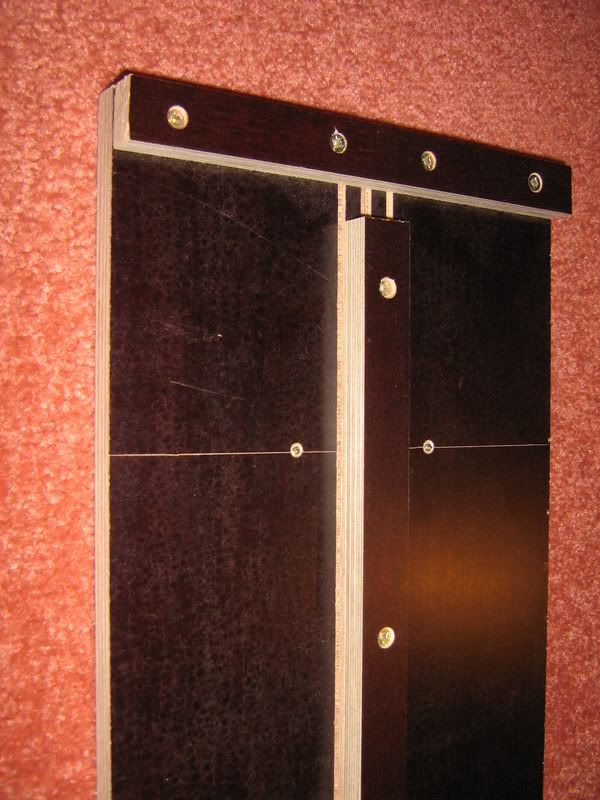 . These protrude about 1.5mm 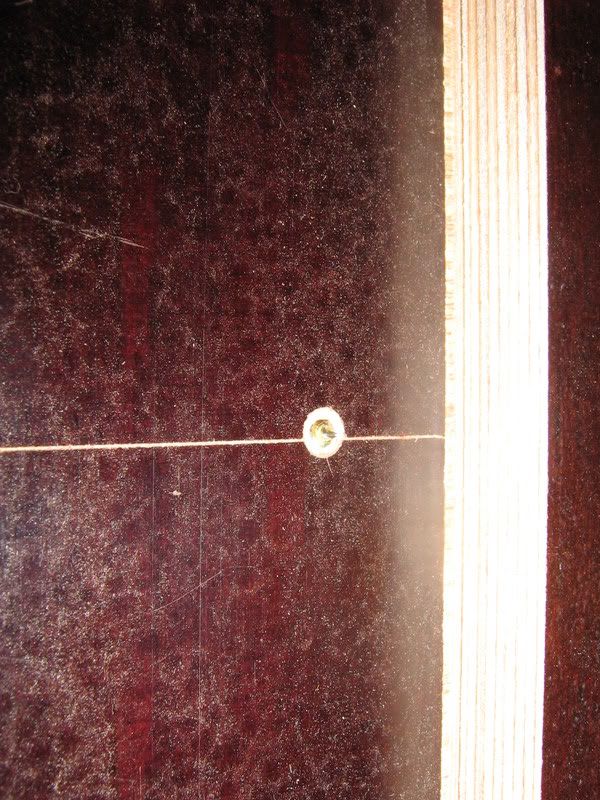 Oops this one was a little off the scribed line but well within the adjustment range of the hinges. Using the jig is dead easy. Lay the door on one side of the central stop or other according to which hand the door is. Once the door is in position, two taps with a rubber mallet near the hinge location marks the door ready for drilling. Having a left and right hand in one jig allows the hinge positions to be referred to either the top or bottom edge. Lots of way to skin this cat - this is the one I use. Bob |
|
|
|
Post by engineerone on Feb 16, 2008 22:36:27 GMT
nice one bob i like it now to find the ply  paul  |
|